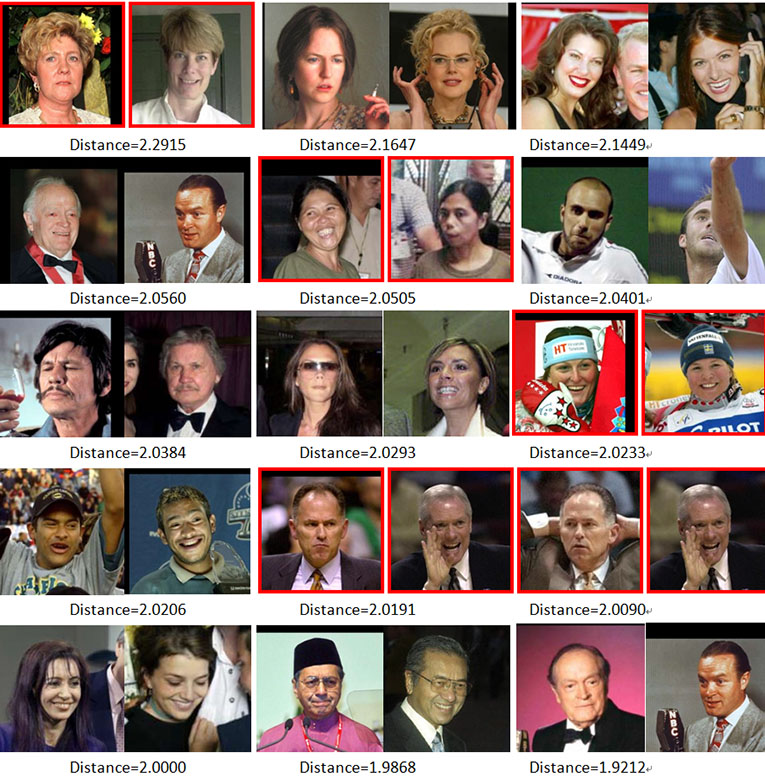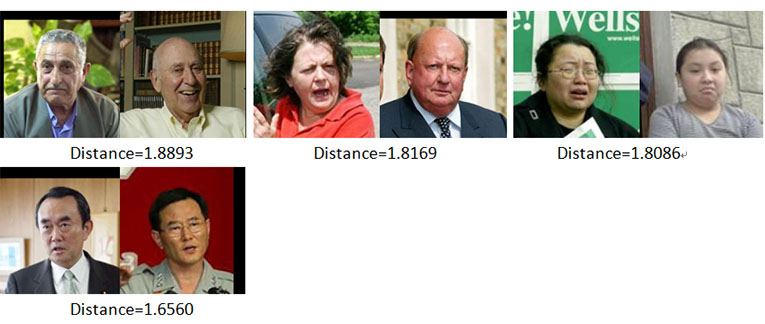Our face recognition algorithm has achieved 99.68% in LFW benchmark, which is in level 3 - the world’s top level.
LFW database consists of face photographs designed for studying the problem of unconstrained face recognition.
The data set contains more than 13,000 images of celebrities collected from the web.
Most of the databases used for benchmark of face recognition have been created under controlled conditions to facilitate the study of specific parameters on the face recognition problem.
These parameters include such variables as position, pose, lighting, expression, background, camera quality, occlusion, age, and gender.
The LFW database exhibits “natural” variability in pose, lighting, focus, resolution, facial expression, age, gender, race, accessories, make-up, occlusions, background, and photographic quality encountered by people in their everyday lives.
Face recognition algorithms from the World’s famous corporations, universities and institutions like Google and Baidu have participated in LFW database benchmark and LFW has been the most popular evaluation benchmark for face recognition in real world.
In LFW benchmark, face recognition algorithms are to judge whether randomly chosen pairs of face images belong to the same person or not.
We have developed a facial feature extraction model based on Deep Neural Network.
The deep neural networks used for feature extraction model has been trained on a database which consists of 600,000 photos of 12,000 celebrities collected from the Web.
In order to obtain discriminative feature vector, we have designed 8 DNNs with different structures and have optimized each DNN with softmax loss and triplet loss.
A feature vector formed by linking the features from the 8 DNNs is converted to the final feature vector through a dimensional compression by metric learning with triplet loss.
For compare feature vectors, L2 distance is used.
Generally, performances of face recognition models based on DNN depend on the size of the data used for the training.
The more persons and photos per person are included in the database, the better the performance of the DNN is.
The following table shows typical face recognition methods whose performance are among top 5 in LFW benchmark and the size of the database used for the training.
Organization | Images | Accuracy (%) |
Baidu | 1.2M | 99.77 |
Dahua-FaceImage | 2M | 99.78 |
Easen Electron(Our Method) | 0.6M | 99.68 |
Google | 200M | 99.63 |
We have achieved a high performance using a relatively small sized database owing to unique DNN structures and training methods.
Our face recognition algorithm has been tested under Unrestricted, Labeled Outside Data protocol of LFW benchmark.
This protocol is to test the accuracy in the 6000-pair verification task.
Figure 1 shows examples of correctly classified pairs from LFW database with our face recognition algorithm.
The example images shown in Figure 1 are considered difficult to recognize because of various pose, expression and occlusion.

Figure 1. Examples of correctly classified pairs of the same person.
Figure 2 shows all misclassified pairs.
Our algorithm produced 19 misclassified pairs out of 6,000 and 5 of them are mislabeled in the database, which means the actual number of misclassified pairs is 14.

(a)False Reject Pairs

(b)False Accept Pairs
Figure 2. Pairs Failed in LFW benchmark. (a) False Reject Pairs. (b) False Accept Pairs. The score under the image is the distance between two feature vectors from above pair. The threshold used in the face verification is 1.9212. The ones in red boundary are mislabeled pairs.




